Introduction
Prairie du Chien is Wisconsin’s second oldest community and one of the oldest along the Mississippi River. Located on a wide prairie next to the river, Prairie du Chien has lost much of its old town to that unruly mistress, the Mississippi River, but continues to reshape itself as it moves into its fourth century.
Visitor Information
The Prairie du Chien Regional Tourism Center (US Highway 18; 800.732.1673) is at the foot of the causeway that connects Wisconsin and Iowa and has an extensive collection of brochures.
History
A long, wide prairie stretches north from the confluence of the Wisconsin and Mississippi Rivers. It was probably an important trading area before Europeans arrived, a tradition that continued when it anchored the western end of the Fox-Wisconsin waterway, a key transportation route for fur traders, voyageurs, and missionaries that connected Montreal and the Great Lakes to the Mississippi River. Each spring and fall, Indians and traders assembled to rendezvous and to conduct business.
When Jonathan Carver passed through in 1766, he found a thriving village called La Prairies les Chiens that “contains about three hundred families; the houses are well built after the Indian manner, and pleasantly situated on a very rich soil, from which they raise every necessary of life in great abundance.”
The town’s name apparently dates back to the 1730s when fur traders encountered a Meskwaki camp on the prairie. The Chief’s name was Alim, which meant dog, so the French traders translated the word into its French counterpart: chien. After France ceded its North American lands in 1763, Britain gained considerable influence in the area.
Prior to 1781, no Europeans owned land around Prairie du Chien, even though many traders and former voyageurs had homes in the area. In 1781—in the middle of the Revolutionary War—the British governor, after negotiating with resident Meskwakis, granted nine square miles to Pierre Antaya, Augustine Ange, and Basil Giard.
After the Revolutionary War win gave America control of the region, Prairie du Chien was far from the minds of the new American government. American explorer Zebulon Pike reached Prairie du Chien in 1805, but no other American military forces would reach Prairie du Chien until the War of 1812. In spite of their loss, British traders continued to dominate commerce in the Northwest. When George Washington was sworn in as the first President of the United States in 1789, there was not a single American trader at Prairie du Chien.
Slowly, the American government began to assert control over the distant western lands. In October 1796, they took control of Mackinac Island from the British, opening up the vast Northwest Territory to American exploration and trade. Civilian government in Prairie du Chien began in 1802 with the appointment of a Justice of the Peace. At that time, most of the one hundred or so residents were of French-Canadian or mixed-race ancestry and worked as traders or farmers. Several American Indian communities grew in close proximity.
During the War of 1812, the British had nearly unchallenged control of the Northwest Territory, aided by strong alliances with several Indian nations because of their long-standing trade relationships (and no attempts by the American government to build alliances). A handful of resident Americans at Prairie du Chien built Fort Shelby in June 1814, but it was quickly captured by the British and renamed Fort McKay. The British held Fort McKay until May 1815, when American forces finally forced them out; on their retreat, they torched the fort.
British control of the fur trade finally ended with when the Americans won the War of 1812, although some British traders remained active for years. With the British out of the business, John Jacob Astor moved in and consolidated control through the American Fur Company, building a monopoly that lasted until his retirement in 1834. The lucrative fur trade in this region faded away by 1848.
After the War of 1812 ended, Americans moved to establish a military presence and civilian government at Prairie du Chien. In June 1816, General Thomas Smith arrived with six companies and supervised construction of Fort Crawford on St. Feriole Island near the ruins of Fort Shelby/McKay. In 1818, Crawford County was established as part of Michigan Territory with Prairie du Chien as the county seat.
In August 1825, the US government convened a large council of Indian nations at Prairie du Chien to demarcate land boundaries for each nation, although the US would later move to negotiate (or just take) land within these defined boundaries. Among the American Indians leaders who attended were Wabasha, Red Wing, and Little Crow (all Dakota), Keokuk (Sauk), and Decorah (Ho Chunk). Black Hawk, however, did not attend, so many Sauk did not feel represented.
The following year, the soldiers were transferred to Fort Snelling (near St. Paul) and Fort Crawford was abandoned. A brief Indian uprising in the fall led to a renewed Army presence and by the summer of 1827, Fort Crawford was occupied again. During an official visit to the fort that year, General Edmund Gaines noted that continual flooding was ruining the fort and that its location on the island made the soldiers vulnerable to numerous diseases. He recommended relocating it.
Lieutenant Colonel Zachary Taylor (a future US President) arrived in 1829 to command Fort Crawford. He supervised early construction of a new stone fort that was located on the mainland safely out of the Mississippi River’s reach. Jefferson Davis, the future president of the Confederate States of America, served as a lieutenant under Taylor. Davis developed a crush on Taylor’s daughter, Sarah Knox Taylor, but Zachary didn’t approve; he didn’t want his daughter marrying a military man. Davis resigned from the Army to marry Sarah, anyway. They both contracted malaria when they were visiting Davis’ sister in Louisiana. Jefferson survived but Sarah did not. They were only married three months.
Taylor left Fort Crawford in 1830 but returned 1832 (the same year a cholera epidemic killed 100 soldiers) to command troops during the Black Hawk War. This time he stuck around a little longer, serving until 1837. The fort declined in importance after the Black Hawk War, and the last US soldiers left on June 9, 1856.
As the fur trade waned, Prairie du Chien became an important port for shipping wheat and lumber and started to attract new residents. The Milwaukee and Mississippi Railroad arrived in 1857 (completing the first rail line across Wisconsin); the new jobs attracted Irish immigrants, who were then followed by waves of Bohemians and Germans. The more established French families turned to farming, mostly on the northern part of town, gradually losing their cultural traditions through assimilation and intermarriage.
Prairie du Chien remained a key grain shipping point until after the Civil War when St. Paul (Minnesota) took most of that business. Even as Prairie du Chien lost river commerce, however, rail traffic stepped up. Some other industries that came and went: clamming/pearl button manufacturing, cigar factories, and woolen mills.
A fire in 1873 shifted the business district to its current location along Blackhawk Avenue. When artesian wells were discovered near the end of the century, Prairie du Chien became a spa destination. Many of those wells are still in use, although they are no longer drawing spa tourists. After the big flood of 1965 and several smaller ones in subsequent years, the Army Corps of Engineers used Prairie du Chien as a test case for its first flood protection program that did not involve building taller levees. Under this new approach, the Corps purchased property in flood-prone areas and moved residents to higher ground. Between 1978 and 1984, 121 properties were purchased and its residents relocated. Some people their homes with them; in one case, an entire block of six houses was moved.
Random Fact: Prairie du Chien has been through more than 40 major floods since 1785.
Exploring the Area
St. Feriole Island
Old Prairie du Chien was located on St. Feriole Island, most of which is a park today (Lawler Park). There are several attractions worth visiting.
Villa Louis (521 N. Villa Louis Rd.; 608.326.2721) is the impressive Victorian home built by the Dousman family. The home was built on top of an Indian mound. The interior is dark but elegant. Most of the furnishings are original to the house. The Villa Louis tour includes several other buildings on the property and the nearby Fur Trade Museum, built in the 1850s for the last fur trader in Prairie du Chien, BW Brisbois.
The Mississippi River Sculpture Park (N. Villa Louis Rd.; 608.326.8555) is the brainchild of sculptor Florence Bird, who has ambitious plans to chronicle in bronze several thousand years of human history in the region. Several sculptures currently are in place, including Black Hawk, Dr. William Beaumont, The Touring Lady, Emma Big Bear, and The Voyageur. Bird hopes to complete a total of 24 sculptures.
As you go around the island you’ll notice several attractions:
- The imposing Dousman Hotel (Water St.) was built in 1864 for railroad passengers. It is now an events center.
The Rolette House (Water St.) is the white frame building next to the Dousman Hotel. It was built in the early 1840s for fur trader Joseph Rolette, who, like many frontier entrepreneurs, made and lost a lot money, living in luxury and dying in poverty. - Joseph Rolette built the Brisbois House (Water St.) for his ex-wife, Jane Fisher, as part of a separation agreement. The house was completed around 1836 from limestone left over from the construction of Fort Crawford. It is currently owned by the Wisconsin Historical Society and is typically open only for special events.
- St. Feriole Island Memorial Gardens (200 N. 4th) includes a walking trail through rows of flowers and native plants.
- The restored St. Germain dit Gauthier-Coorough House (419 5th St.), a log cabin that was built in the early 1800s in the traditional French-Canadian pièce du pièce style: squared logs were laid horizontally with ends notched to fit together; gaps were filled with moss, then the exterior was plastered.
On the Mainland
Back on the mainland, the Planted Tree (109 W. Blackhawk Ave.; 608.326.8733) showcases the works of local and regional artists, as well as handcrafted items to decorate your home or RV.
St. Gabriel Archangel Catholic Church (506 N. Beaumont; 608.326.2404) dates back to the late 1830s when it was built under the guidance of Father Samuel Mazzuchelli. The church has undergone several alterations during its lifetime. The major changes include the removal of the original bell tower and a 1908 expansion that added a vestibule and towers on the west side of the church and an addition on the east side that increased the depth of the sanctuary. A series of drawings depicting the changing appearance of the church is displayed on a wall inside the vestibule. Just outside the church is the grave of Father Lucien Galtier, the person who is at least partially responsible for the fact that the town across the Mississippi River from Minneapolis is now known as St. Paul instead of Pig’s Eye.
The Fort Crawford Museum at Prairie du Chien (717 S. Beaumont Rd.; 608.326.6960) has two museums: the Second Fort Crawford Hospital Museum and the Prairie du Chien Museum. The Fort Crawford Museum is housed in the reconstructed hospital building of the Second Fort Crawford and has exhibits about the fort and on the history of medicine left over from the days when this museum was operated by the State Medical Society of Wisconsin, including a 19th-century pharmacy and an exhibit on Dr. William Beaumont, who performed experiments on Alexis St. Martin, “the man with a hole in his stomach.” St. Martin had been shot at close range, opening a hole in his rib cage, right through to his stomach. The wounds eventually healed, except for the hole in his stomach. Beginning around 1829, Beaumont did two years of experiments to observe digestion through the hole, like tying string to a piece of sausage, dropping it into St. Martin’s stomach, then pulling the sausage out periodically to check on the progress of digestion. The book he subsequently wrote (Experiments and Observations on the Gastric Juice and the Physiology of Digestion) was required reading for generations of medical students. The Prairie du Chien Museum has the usual memorabilia and displays: fossils, arrowheads, Mississippi mussels, river bridges, an iron lung, plus two transparent female mannequins with organs that light up during the 13-minute anatomy lesson, so it even has something for the kids.
Just down the street, Fort Crawford Cemetery (413 S. Beaumont Rd.; 414.382.5300) is the smallest national cemetery in the US; 64 people are buried in its half acre. In the 1930s, the United Daughters of the Confederacy erected a monument to Jefferson Davis, the future President of the Confederate States of America, who served (briefly) at Fort Crawford, which is one of four sites that claim to be the location where Davis eloped with the daughter of future US President Zachary Taylor.
Holy Trinity Episcopal Church (220 S. Michigan; 608.326.6085) was organized in 1837 to serve officers at Fort Crawford. The current Gothic Revival church was built in 1856; the bell tower and bell were added in 1870. The inside has the pews original to 1856 and woodwork with painted grain. The church sat empty at times in the 19th century because the parish lacked a minister, but it has an active congregation today.
Sports & Recreation
La Riviere Park (62036 Vineyard Coulee Rd.; 608.326.7207) is a sprawling city park on the east side of town with a nature center, hiking trails, mountain biking, and an archery range, plus the standard picnicking and playground options.
On the causeway between Prairie du Chien and Marquette Iowa, Sturgeon Slough Hiking Trail (563.873.3423) is a tranquil one-mile loop on mostly flat terrain next to the river and its backwaters. The viewing platform at the end of the trail has good views of the slough.
Parks Along the Mississippi River
Lawler Park (608.326.6406) is right next to the river on St. Feriole Island. The park is named for John Lawler, a significant player in Prairie du Chien’s interstate commerce, as he made his living getting people across the Mississippi River, first by ferry, then by an innovative pontoon bridge he built that served rail traffic from 1874 until 1961.
Tours
The old jail/dungeon in the basement of the 1860s courthouse is a creepy place. Deep in the basement, with little access to natural light, the seven feet deep by five feet wide cells are built of thick limestone blocks darkened by years of smoke from kerosene lamps and secured by heavy iron doors. There is no regular tour schedule, so if you want to check it out, your best bet is to contact the Fort Crawford Museum (608.326.6960).
Entertainment and Events
Farmers Market
During the warmer months, you can buy fresh produce and other goodies at the Prairie Street Farmers Market (Saturday mornings; 406 E. Blackhawk Ave.).
Festivals
Prairie du Chien has a wealth of festivals, including some that are truly unique.
The Prairie Villa Rendezvous (608.822.6916) kicks off the summer festival season in mid-June with a big crowd of men and women in leather tights reliving the glory of 18th-century trapper life.
What started as a private party has grown into the Prairie Dog Blues Festival (888.567.1567/608.326.0085): two full days of live blues next to the Mississippi in late July.
In September, the Carriage Classic (608.326.4436) is a two-day antique carriage riding competition on the grounds of Villa Louis, and it is way cool. For a short time in the 1880s, the Dousman family home, Villa Louis, was the site of an Artesian Stock Farm. I don’t really know what that means, but I think it has something to do with breeding horses, or aliens. In 1980, local carriage enthusiasts got together on the Villa Louis grounds to resurrect the contest. Since 1985 the competition has been sanctioned by the American Driving Society (no relation to AAA) and the event has grown to become an important national event, if you’re into Artesian stocks or carriages. Several categories of competitions and exhibitions occur over the course of two days, including things like the Junior Reinsmanship, Antique Turnout, Large Pony Open Cross Country, and Picnic Class. The carriages, antiques all, are beautiful examples of art meets function, and the horses are the picture of grace and elegance, even when occasionally feisty and impatient. (Pictures from the Carriage Classic are here.)
The Shihata Orchard Fest (608.326.2785) in early October celebrates the apple harvest.
**Prairie du Chien is covered in Road Tripping Along the Great River Road, Vol. 1. Click the link above for more. Disclosure: This website may be compensated for linking to other sites or for sales of products we link to.
Where to Eat and Drink
Valley Fish and Cheese (304 S. Prairie St.; 608.326.4719) is true to their name, selling a variety of local food products, including fresh and smoked fish (carp, catfish, or sturgeon), pickled fish, cheese, specialty meats like summer sausage, turtle meat, and fresh morel mushrooms (in season). Buy a gift box to take home to all your friends!
If you’re in the mood for fresh-baked pastry or bread, The Local Oven (213 E. Blackhawk Ave.; 608.326.0960) has what you need, like doughnuts and deep-fried fruit pies.
Simply Café (204 W. Blackhawk Ave.; 608.326.7467) serves a variety of coffee drinks, breakfast sandwiches, and fresh soups, salads, and sandwiches.
Pete’s Hamburger Stand (118 W. Blackhawk Rd.; 608.326.6653) is your basic local institution serving burgers grilled in a hint of water and topped with grilled onions. Started in 1909 by Pete Gokey, it is still run by the Gokey family. It’s a popular place, so don’t be surprised if you have to wait in line for a while. You won’t get anything fancy here, just really good grilled burgers.
The Spring Lake Inn (State Highway 35 at County Highway N; 608.326.6907), about four miles north of town, is a popular and highly regarded country inn that serves ten varieties of hearty half-pound sirloin burgers and six types of chicken sandwiches. Dinner entrées are mostly of the steak and seafood variety; the Friday night fish fry is very popular. Bring cash; they do not accept credit cards.
Fort Mulligans (214 Blackhawk Ave.; 608.326.0639), housed in an 1850s-era building long known as the French Store, serves 24 types of sandwiches and burgers, plus a range of fried foods, pasta, and above-average entrées like herbed pork tenderloin.
Jones Black Angus (37640 Highway 18 South; 608.326.2222) is another long-time supper club in the area, serving the traditional range of steaks, fish and seafood, and other hearty entrées in a fine dining atmosphere.
Where to Sleep
Prairie du Chien has a lot more lodging options than one would expect for a town of its size, but summer prices can be surprisingly high. Most of the options are fairly standard motel rooms, some chains and a few mom-and-pop operations; if you want to stay in a smaller, boutique place, check out the options across the river in McGregor and Marquette. If you want to stay in the one of the chains, check the Internet.
Camping
La Riviere Park (62036 Vineyard Coulee Rd.; 608.326.7207) has four basic sites for walk-ins near the barn (you must call in advance to register) plus 30 sites for horse campers with water and electric (all sites are free).
Sports Unlimited Campground (32800 County Road K; 608.326.2141; open April 15–November 1) is a large facility on the north side of town with 350 fully equipped sites, mini-golf, and a marina.
Budget
The Spring Lake Motel (State Highway 35 at County Highway N; 608.326.6907) is about 3½ miles north of Cabela’s on Highway 35 at County Highway N; the six rooms are about as basic as they come, but come clean and cheap.
The Prairie Motel (1616 S. Marquette Rd.; 608.326.6461) has 32 clean, spacious rooms equipped with microwave, refrigerator, and coffee pot.
Cabins/Houses
These places are big enough for families or groups traveling together. The Duck Inn Lodge (38299 Stuckey Rd.; 608.326.5118) is a labor of love that began with the renovation of an old railroad car into a small private hunting lodge. The lodge is decorated with themes that celebrate railroads and sports teams and is equipped with full kitchens and cable TV. While the nine-bedroom lodge may be best for big groups, the space can be divided into three separate areas and individual rooms can be rented if space is available.
Moderate and up
The River District Hotel (Prairie du Chien: 130 S. Main St.; 608.326.7878) is a former chain hotel near downtown and the riverfront that is now independently owned. Rooms come standard with a small fridge, microwave, and coffee pot.
Windsor Place Inn (Prairie du Chien: 1936 S. Marquette Rd.; 608.326.7799) has 35 modern rooms hidden behind a row of chain motels. Each room is non-smoking and is equipped with a coffee pot, refrigerator, microwave, and cable TV.
The Waterfront Hotel (113 S. Main St.; 608.380.1021) offers 55 tidy deluxe rooms between St. Feriole Island and downtown Prairie du Chien. Some rooms have river views. A stay includes a continental breakfast.
Resources
- The local newspaper is the twice-weekly Prairie du Chien Courier Press (608.326.2441)
- Post Office: 120 S. Beaumont Rd.; 608.326.6914; inside is a relief sculpture of Father Marquette and Louis Jolliet
- Prairie du Chien Memorial Library: 125 S. Wacouta Ave.; 608.326.6211.
Where to Go Next
Heading upriver? Check out Lynxville.
Heading downriver? Check out Bridgeport.
Community-supported writing
If you like the content at the Mississippi Valley Traveler, please consider showing your support by making a one-time contribution or by subscribing through Patreon. Book sales don’t fully cover my costs, and I don’t have deep corporate pockets bankrolling my work. I’m a freelance writer bringing you stories about life along the Mississippi River. I need your help to keep this going. Every dollar you contribute makes it possible for me to continue sharing stories about America’s Greatest River!
Prairie du Chien Photographs
A Song for Prairie du Chien
Mississippi River (Home Sweet Home) by Al Harris; from Songs from the Land Between Two Rivers (2009)
©Dean Klinkenberg, 2024, 2021, 2018,2013,2011


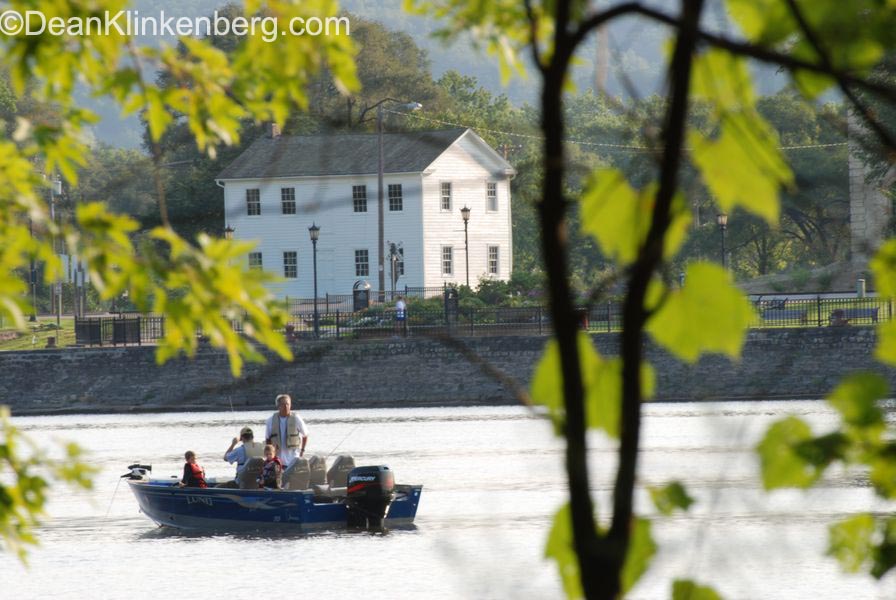

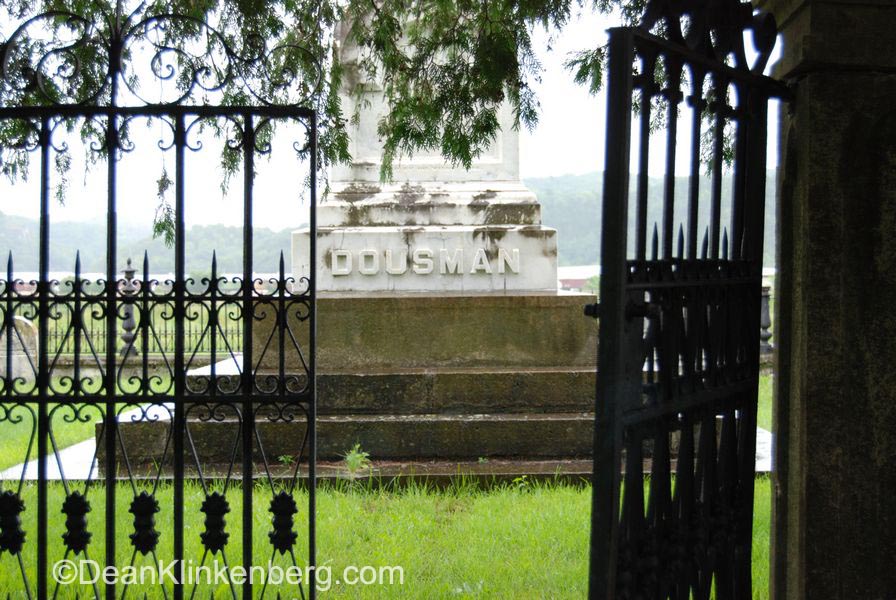


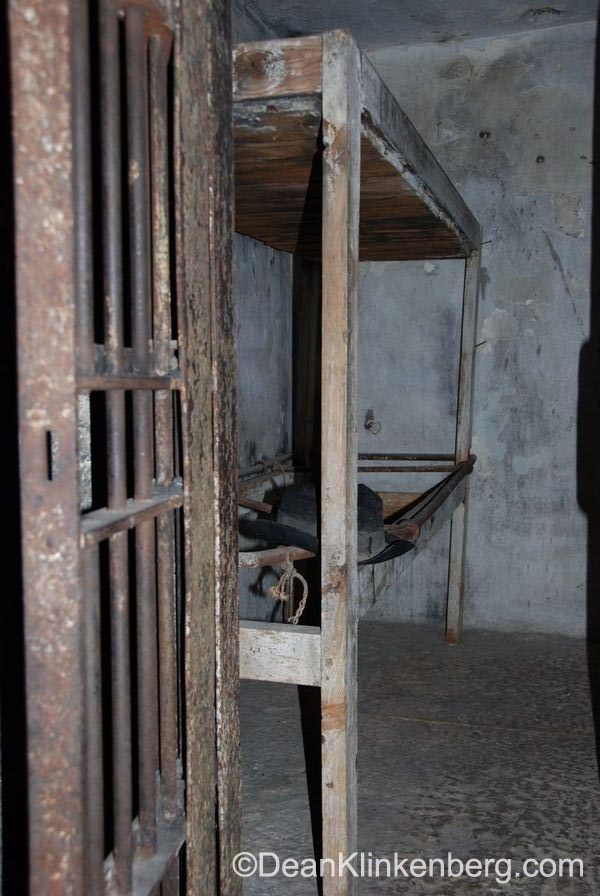

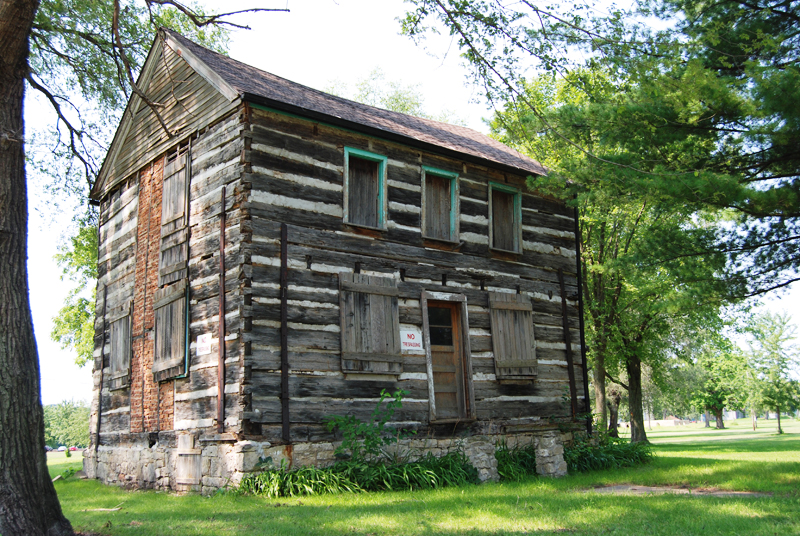

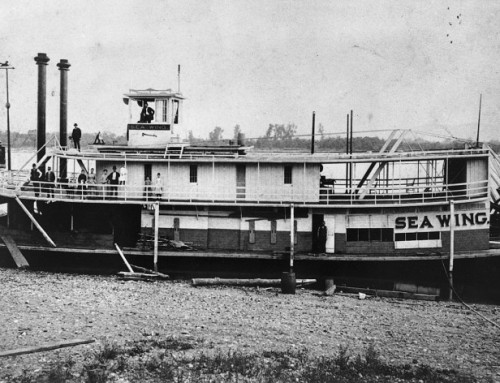
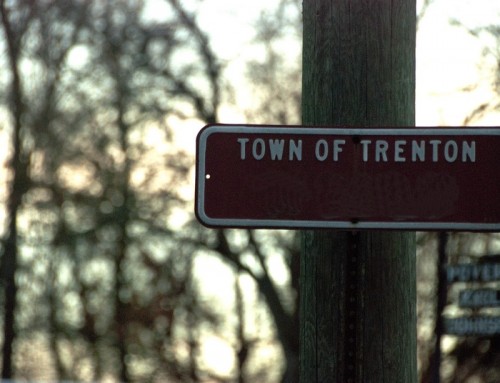
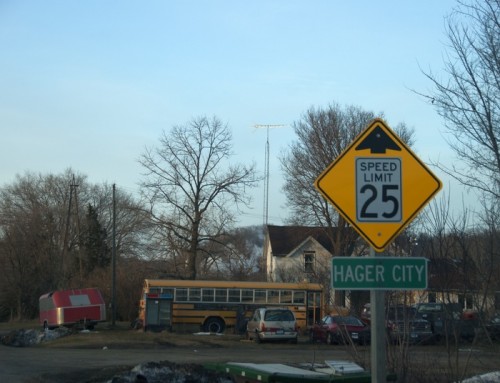
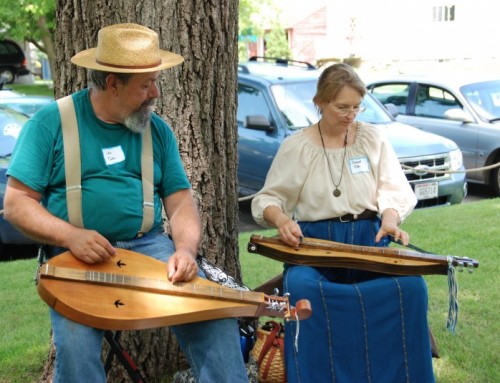
Dean –
Saw your write up on your travels in the Madison, WI paper. Quite impressed. We have been in love with the Mighty Mississippi River for many years. 5 years ago, we bought a place in Wyalusing – just south of Prairie du Chien. We also rent that out to vacationers coming to visit the area. Our cottage is called The Landing and I wanted you to know you are more than welcome to stay if you’re ever in the area. The wyalusing area is a small quaint village (maybe you’re aware of it or have visited) and is very close to the popular Wyalusing State Park.
Please come visit when you can and good luck on your journey.
Cyndi O’Connell 608-444-3974